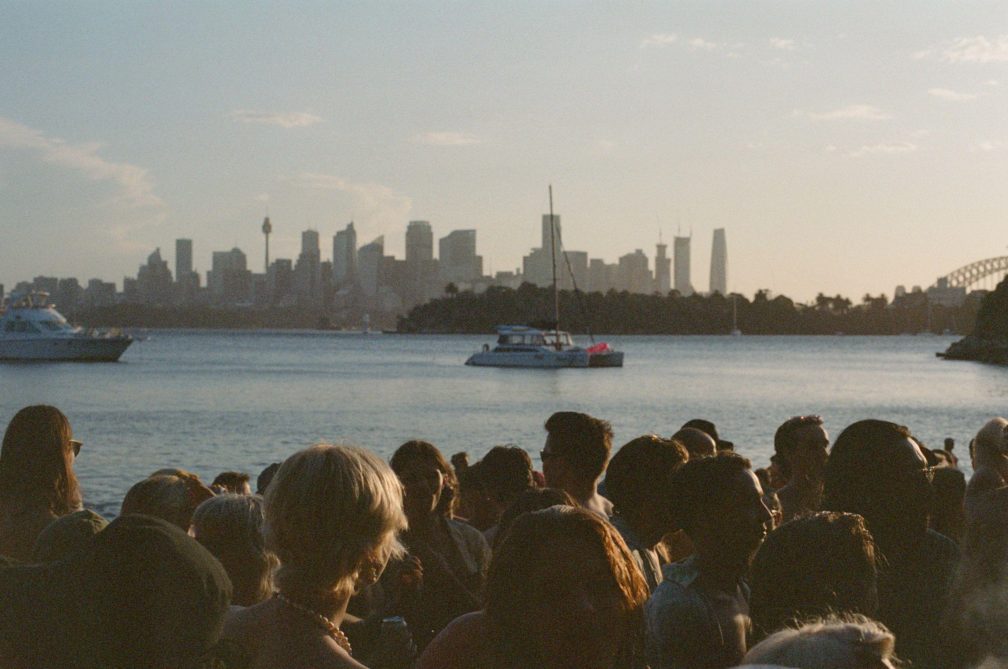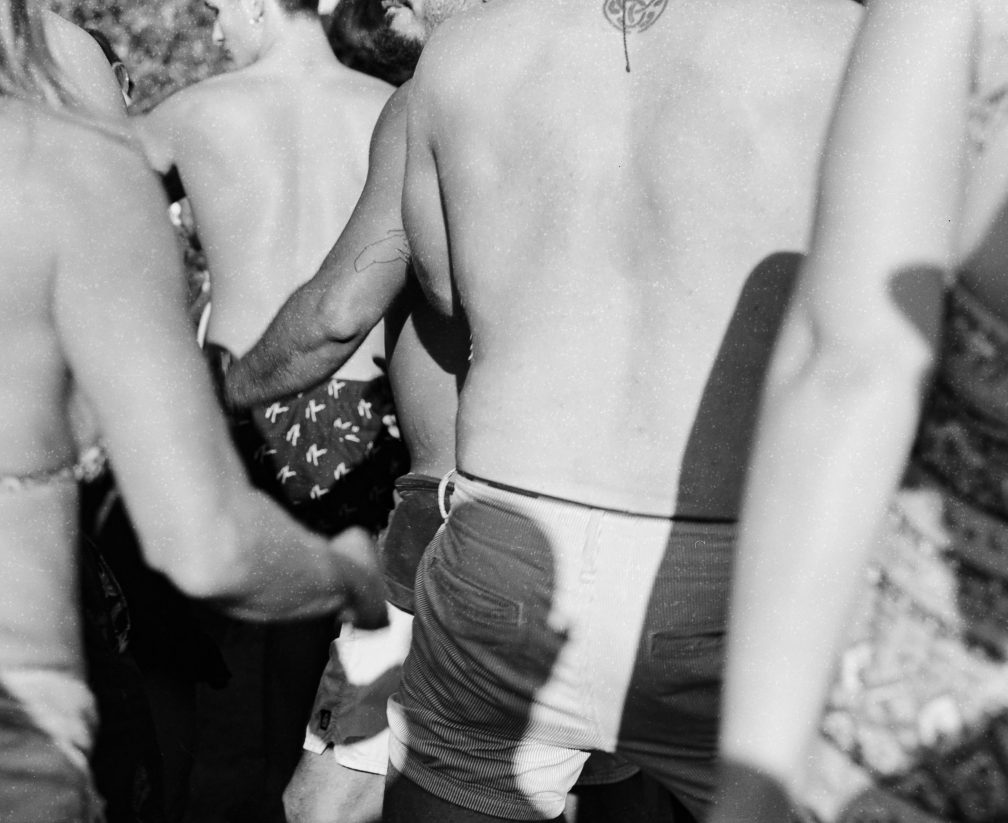 INTERVIEWS
INTERVIEWS
Photographer Spotlight: Harry Cole & dance's little moments
"Photographers do walk a fine line between preservation, art and intrusion."
In many ways dance and electronic music in 2024 feels like a visual experience as much as an auditory one. We’re regularly seeing festivals through the phone lenses of people we may have never even met, via uniformly framed live recordings, and of course in the near endless stories, diaries & ‘grwm’s of the artists we love.
The art of photography has, like the art of journalism, become part and parcel in the way we live our lives, and something that seemingly everyone has a decent knack for.
That’s why in this series, we’re focusing on the photographers who are responsible for accentuating & honing in on the most important parts of our national dance communities.
Harry Cole is an Eora-based photographer who is equally comfortable on the outskirts of a dancefloor as he is weaving through his home city. His work is dedicated to smaller moments, and the details so often overlooked not only in the world of the everyday, but of the night too.

Your photographs are regularly focused on finer details. Limbs, close ups of small environmental factors, decor that many people often miss. Why do you choose to hone in on these sorts of elements when you shoot, particularly in musical contexts?
In a broader sense my practice is first and foremost about mindfulness. We are constantly being distracted, the camera is a tool for keeping me focused on the world around me. There are so many beautiful moments I would not have even noticed if it was not for this awareness.
On the dancefloor, music is transformative. It brings energy, rhythm, and a sense of connection. It’s where people may go to have fun, be with others and let go, and while I do too, I often go to experience the sparks that fly when people are brought together by music. The limbs and bodies that tangle and intertwine creates the mood. The delicate movement of a dancer’s hands, the intricate play of light on a crowd that create silhouettes, the almost unnoticed elements that contribute to the atmosphere. I believe these details are where the true character of the experience shows itself, and those are the elements I love to explore.
How does photographing dance music contrast with the rest of your work?
There are certainly some contrasts between my photographs based on the environments (often darkness) and subjects. However, my mindset doesn’t change between these worlds. I am still focused on the moment and moments within moments. The soundtracks might be different, but the rhythm of making them is the same. I think this extends to all parts of my life.
Photography in dance spaces is a contentious issue. People are often told to “put their phones down”, with many spaces not even allowing photography. What’s your take on this consistently contentious issue?
Photographing dance floors can be a contentious issue and it’s certainly something that I think about a lot when shooting. The statement you mention is a call to be fully present, to engage with the music and the collective experience without the distraction of needing to harness every moment of that future memory. That is totally fair.
At the end of the day I believe it comes down to intention and respect. I photograph with the intention of exploring the intersection of all the beautiful elements of the dancefloor. In a way I think my practice reflects the idea that we should enjoy the moment. As I mentioned earlier, I am mindful during my experience so when I see a unique moment arise, I take a photo. It is not rooted in the need to capture everything, a laugh or a song. It is rooted in pure awe of a decisive moment; the essence of the experience as a whole.

Is photography the enemy of keeping something secure, safe & protected?
It sure can be! But at the same time it may not be so evil. It depends on what you are trying to keep safe and protected. There is definitely an argument of allowing dancers to lose themselves in the music without distraction and ensuring privacy. If this is the aim for a particular party then I’m all for organisers implementing no phone policies.
In some cases Photography can be exposing and inherently visible, but to view it as the enemy is to overlook its nuanced potential and meaning. Photography can also be a means of securing memories and preserving times that we shared and experienced together. Is that not a core reason why we’re there? Images and art can prompt us to reflect on lived realities while also making us feel safe and loved. I don’t know, you can get so deep with these kinds of questions.
I think the permanence of the internet and social media is the enemy of keeping things protected but photography is indeed a direct avenue to that world. Photographers do walk a fine line between preservation, art and intrusion.
What are some of the best gigs you’ve photographed, & why?
Loved shooting Minutiae earlier this year. It aligns so well with what we’ve talked about today regarding noticing the smaller details of life (or a festival), they are so important to create a layered, enriched experience. The Lovejoy-D-Street crew are no stranger to this and craft dance floors so well. Hence why another one that comes to mind is the Club Less shows which had the perfect mix of day and night, with a crowd that really wanted to be there.
Other notable ones include Dekmantel, which I’ve been going to since 2015, and Mode which I hope has a similar success story - I fondly recall walking around both just mesmerised by all the beautiful people that filled them. Humans are pretty special.

We live in a world now almost entirely dominated by visual mediums. What do you think the future of photography looks like?
For me the future of photography lies in the physical. When was the last time you spent time with, saw or held a physical image?
Seeing printed images beyond algorithms or screens is a whole new experience. It compels you to contemplate the photo in isolation, to think about its origins and meaning. I think you feel it too with the resurgence of vinyl. People want to be with a song, they want something real.
From my own experience with photobooks and alike I think this extends to photography. I am in the process of establishing an all-image Australian photography and arts publication called D’ART which I hope to bring to the world very soon. I want to create a space where people can engage deeply with images in a physical format, away from the distractions of screens. Each issue will be a curated collection that invites readers to take their time, to explore and reflect on each image. In a world where everything is increasingly digital, I believe there is a growing desire to return to the tangible.
-
View Harry’s work via Instagram or his website.
Jack Colquhoun is the Managing Editor for Mixmag Australia, follow him on Instagram.


